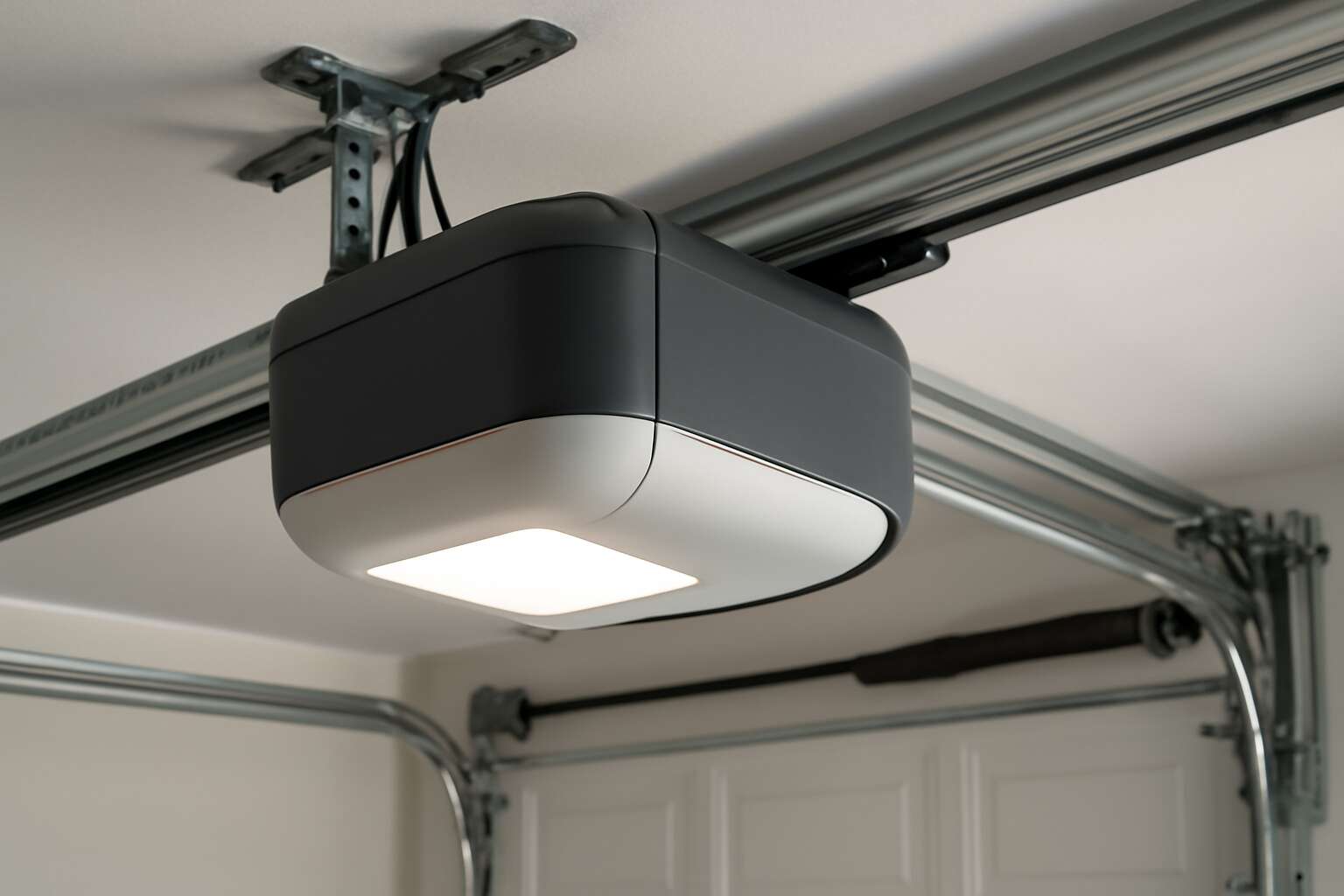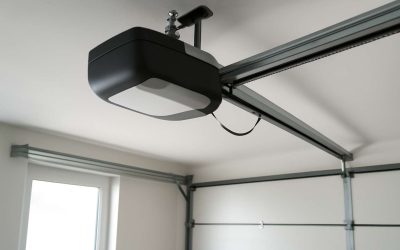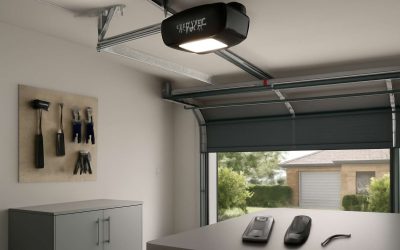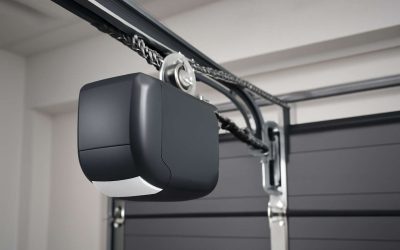Understanding Garage Door Motor Lifespan
What Is a Garage Door Motor?
Imagine a silent guardian, tirelessly opening and closing your garage door day after day. The garage door motor, often hidden in plain sight, is the unsung hero of this everyday convenience. Its true importance lies in its endurance—a factor directly tied to the garage door motor lifespan. But what exactly is a garage door motor, and how long should it last?
A garage door motor is a sophisticated piece of machinery responsible for powering the movement of your garage door. It converts electrical energy into mechanical force, ensuring smooth and reliable operation. Typically, these motors are designed with durability in mind, yet their lifespan varies depending on usage, maintenance, and quality. On average, a well-maintained garage door motor can last between 10 to 15 years.
Understanding the factors that influence the garage door motor lifespan is crucial for homeowners. Regular inspections, lubrication, and timely repairs can significantly extend its operational life. Conversely, neglect can lead to premature failure, leaving you stranded in a moment of need. Since the motor is the heart of your garage door system, recognising its importance helps prevent unexpected breakdowns and costly replacements. After all, a dependable garage door motor isn’t just about convenience; it’s a cornerstone of home security and daily routine.
Typical Lifespan of Garage Door Motors
The durability of a garage door motor is a vital aspect that often goes unnoticed until it suddenly fails. On average, a well-cared-for garage door motor can serve reliably for around 10 to 15 years. This lifespan isn’t set in stone; it fluctuates based on usage patterns, environmental factors, and maintenance habits. For instance, frequent daily operations or exposure to harsh weather can accelerate wear and tear, shortening the garage door motor lifespan.
To put it into perspective, some motors may even reach 20 years with proper care, while others might falter after just a decade. Regular inspections and lubrication are simple yet effective ways to extend its operational life. Remember, a garage door motor that receives consistent attention is less likely to develop issues that can lead to costly replacements. It’s a quiet workhorse that keeps your daily routine running smoothly—taking care of it ensures it continues to serve faithfully for years to come.
Factors Influencing Motor Longevity
The longevity of a garage door motor hinges on a tapestry of factors, each weaving its own influence into the fabric of its lifespan. While some motors quietly serve for over a decade, others may falter sooner due to unseen stressors. Environmental elements, for instance, play a pivotal role—exposure to harsh weather conditions such as extreme cold, heat, or humidity can accelerate wear and tear. Similarly, usage patterns significantly impact the motor’s durability; a garage door that opens and closes multiple times daily demands more from its motor than a less frequently used one.
Regular maintenance acts as a guardian for the garage door motor lifespan. Simple practices like lubricating moving parts and inspecting for signs of fatigue can extend its operational life. For those seeking to understand what influences longevity, consider these elements:
- Environmental exposure to weather conditions
- Frequency of daily operation
- Quality of initial installation
- Level of routine maintenance and lubrication
Each factor intertwines to determine whether your garage door motor will be a reliable companion for years or a fleeting visitor in your home’s mechanical symphony. The magic lies in recognising these influences and nurturing the motor’s health before issues arise.
Signs Your Garage Door Motor Is Deteriorating
Unusual Noises and Vibrations
Unexpected sounds can be the first whisper of trouble in your garage door motor lifespan. When a garage door motor begins to deteriorate, it often manifests through unusual noises—grinding, squealing, or a trembling hum that seems out of place. These sounds aren’t just annoyance; they signal internal wear that, if ignored, could shorten the motor’s longevity dramatically.
Vibrations are another telltale sign. If your garage door shudders or vibrates excessively during operation, it suggests the motor is struggling to perform optimally. Such irregular vibrations often indicate worn bearings or misaligned components, both of which threaten the overall lifespan of the motor. Recognising these signals early can mean the difference between a simple repair and a costly replacement, making awareness of the signs of deterioration vital for maintaining your garage door motor lifespan.
Slow or Erratic Opening and Closing
When a garage door begins to falter, it often whispers its impending decline through slow or erratic opening and closing. This symphony of inconsistency can be a haunting sign that the garage door motor lifespan is nearing its twilight. Instead of smooth, seamless movements, you might notice the door hesitating, creeping, or juddering as if burdened by unseen fatigue.
Such irregularities are not mere inconveniences; they are the telltale signs of internal wear and tear. A motor struggling to perform can lead to uneven operation, leaving your garage door vulnerable to sudden failure. Recognising these subtle yet telling cues early can be a saving grace, prolonging the motor’s vitality and averting costly replacements.
- The door lurches or jerks during operation, betraying the gradual decline of motor efficiency.
- It takes longer than usual to open or close completely, hinting at diminished power reserves.
- Sudden pauses or abrupt stops suggest misaligned components or slipping gears, both of which threaten the overall garage door motor lifespan.
In the dance of daily life, the garage door’s rhythm should be consistent—an unwavering cadence that signals reliability. When that rhythm falters, it’s a poetic reminder that every mechanical heart has its limits, and understanding these signs is vital to safeguarding your investment in longevity and peace of mind.
Frequent Resetting or Repeated Repairs
When your garage door seems to have developed a mind of its own—repeatedly resetting or requiring frequent repairs—it’s more than just a minor hiccup. Studies suggest that a typical garage door motor’s lifespan hovers around 10 to 15 years, but constant hiccups can cut that journey short. If your motor is constantly throwing tantrums, it’s a clear sign that its internal components are wearing out faster than expected.
Frequent resets or repairs aren’t just an annoyance; they are a siren song of impending failure. You might notice the motor struggling to remember its last command or needing a reboot after every use. Sometimes, the garage door refuses to stay open or closes with a jerk, as if desperately trying to hide its deteriorating state. These signs point to an exhausted motor that’s nearing the end of its operational life.
One telling indicator is a series of short-lived repairs—each temporary fix, a band-aid on a broken leg.
- Repeated sensor realignments
- Regular motor resets
- Inconsistent operation after each repair
These symptoms suggest that your garage door motor’s lifespan is dwindling, and without attention, it could give up altogether when you least expect it. Recognising these early warning signs can save you from being stranded outside your own garage, contemplating a costly replacement instead of a simple tune-up.
Visual Wear and Damage
Over time, the visual wear and damage to your garage door motor can serve as an unmistakable sign that its lifespan is nearing its end. Cracks, rust spots, or frayed wires are not just cosmetic issues—they expose the internal mechanisms to potential failure. When corrosion begins to take hold, it’s as if the motor’s vitality is slowly draining away, threatening to grind your smooth operation to a halt.
In addition to visible damage, a motor exhibiting signs of ageing might also display faded or discoloured components, hinting at prolonged exposure to the elements. These subtle clues can often go unnoticed until a sudden breakdown occurs. Recognising these early visual indicators can be the difference between a quick repair and an unexpected, costly replacement.
Regular inspections often reveal a pattern:
- cracked or chipped housing
- corrosion around wiring and connections
- deteriorated rubber seals that once kept moisture at bay
are all telltale signs that your garage door motor’s lifespan is waning. When such damage appears, it’s a clear signal that the internal components are fighting a losing battle against wear and tear, and proactive measures should be considered to avoid being stranded outside your garage in the dead of winter or summer.
Extending the Life of Your Garage Door Motor
Regular Maintenance Tips – Array
Unlocking the secret to a longer garage door motor lifespan requires more than just a passing glance at its components. Regular maintenance acts as the enchanted shield protecting your motor from premature wear and tear. A simple routine—like lubricating moving parts and tightening loose bolts—can significantly extend its durability. Imagine your garage door motor as a trusty steed; with proper care, it can serve faithfully for years to come.
To truly preserve its vitality, consider implementing a maintenance ritual that includes cleaning the tracks and inspecting the safety sensors. These steps prevent unnecessary strain on the motor, reducing the risk of breakdowns. For optimal performance, some experts recommend scheduling a professional inspection once a year. Remember, a well-maintained garage door motor isn’t just about longevity—it’s about ensuring safety and peace of mind for every entry and exit.
Proper Usage Practices – Array
Proper usage practices are the silent guardians of your garage door motor’s longevity. Every gentle press of the remote, every smooth operation, contributes to extending the garage door motor lifespan. Aggressive or hurried actions, such as repeatedly opening and closing the door in quick succession, can place undue strain on the motor, accelerating wear and tear. Instead, fostering a habit of patience and deliberate use preserves the delicate balance within its intricate components.
Incorporating simple practices can make a profound difference. For instance, avoiding unnecessary door activations during extreme weather or when the door appears obstructed prevents undue stress. Additionally, consider the following:
- Using the remote or wall switch consistently and avoiding forceful manual overrides
- Ensuring the door is fully open or closed before activating the motor
- Observing the door’s movement for any irregularities, which may indicate underlying issues
By respecting the natural rhythm of your garage door, you safeguard the intricate machinery within, ensuring it serves faithfully for years to come. Every mindful act in operation sustains the vitality of the garage door motor, ultimately prolonging its lifespan and maintaining seamless access to your sanctuary.
Timely Repairs and Replacements
Timely repairs and thoughtful replacements are crucial to safeguarding your garage door motor’s lifespan. Ignoring signs of wear can lead to more extensive damage, forcing you into costly fixes or premature replacements. When issues are detected early—such as unusual noises, sluggish operation, or inconsistent movement—addressing them promptly can prevent further strain on the motor and its intricate components.
In some cases, a simple repair can restore your garage door’s smooth operation, extending the motor’s life significantly. However, there comes a point when replacement becomes more practical, especially if the motor shows signs of age or irreversible damage. Recognising these moments isn’t always straightforward, which is why regular professional inspections are invaluable. They can identify underlying problems before they escalate, ultimately preserving the garage door motor lifespan and ensuring seamless access to your home.
Common Garage Door Motor Problems and Solutions
Motor Not Powering On
In the shadowed corridors of everyday life, the garage door motor’s silent vigil can falter without warning. When the power refuses to flow, it’s as if the machinery itself has fallen into a deep slumber, cloaked in an ominous silence. These moments of stillness threaten to unravel the routine, leaving homeowners stranded in a moment of uncertainty. The most common garage door motor problems often stem from electrical failures or worn-out components that have quietly aged beyond their intended garage door motor lifespan.
To diagnose a motor not powering on, one must first consider the simplest culprits—such as a blown fuse or tripped circuit breaker. Sometimes, the solution is as straightforward as resetting the system or replacing a worn-out transformer. However, persistent issues may indicate deeper problems like corrosion on the motor’s internal wiring or a malfunctioning control panel. Recognising these symptoms early can prolong the garage door motor’s lifespan and stave off more sinister mechanical failures.
- Check the power supply: ensure the outlet is functioning and the circuit breaker is intact.
- Inspect the remote control batteries: a simple swap might restore life to the dormant motor.
- Examine the wiring connections for corrosion or damage, which could sever the vital link to power.
Whenever the darkness of malfunction encroaches, understanding the common garage door motor problems and their solutions becomes vital. Without this knowledge, the lifespan of the motor and the safety of the entire system hang precariously in the balance, awaiting the next whisper of failure to reveal itself.
Door Not Closing Completely
Few things are as frustrating as a garage door that refuses to close completely—particularly when it’s the only thing standing between you and a very awkward neighbour witnessing your midnight manoeuvres. The culprit? Often, a malfunctioning garage door motor, which, despite its silent service, has a limited garage door motor lifespan. Over time, wear and tear can cause the motor to hesitate, stalling before the door is fully shut, leaving your prized vehicle exposed to the elements—or worse, unwanted visitors!
Common problems include misaligned sensors, obstructions in the door track, or a worn-out motor gear. These issues can make the door appear to be closing, only to reverse or stop altogether. Fortunately, solutions range from cleaning sensor lenses and removing debris to replacing worn components. If ignored, these problems chip away at the garage door motor lifespan, turning a simple fix into a costly overhaul. Regular inspection and prompt repairs can keep your garage door operating smoothly and extend the longevity of its motor.
Intermittent Operation
Intermittent operation of your garage door motor can be as perplexing as it is frustrating. One moment, the door glides smoothly, and the next, it stalls or reverses unexpectedly. This inconsistency often hints at deeper issues that threaten the overall garage door motor lifespan. Often, the culprit is a worn or malfunctioning component within the motor assembly—such as gear wear, faulty wiring, or failing circuit boards—that causes unpredictable behaviour.
Addressing these issues requires a keen eye for detail. Common solutions include inspecting and tightening electrical connections, lubricating moving parts, or replacing worn gears. Sometimes, the problem is rooted in obstructions or misaligned sensors, which can trigger false signals and disrupt operation. To resolve frequent resets or erratic movements, a professional check-up can pinpoint whether the motor’s internal components are nearing the end of their service life. Recognising these signs early ensures that the garage door motor lifespan is preserved, avoiding costly replacements down the line.
In many cases, a garage door motor lifespan can be extended through simple yet consistent maintenance routines. For instance,
- regular lubrication of chains and rollers
- checking sensor alignment
- ensuring wiring is secure and free of corrosion
can make all the difference. When these small adjustments are neglected, however, the motor’s durability diminishes, increasing the risk of sudden failure when you least expect it. Ultimately, staying vigilant about the motor’s health can save time, money, and the hassle of unexpected breakdowns.
Remote Control Issues
Few frustrations are as relentless as remote control issues that plague garage door motors. Imagine pressing the button, only for the door to remain stubbornly closed or open—an elusive dance of signals and sensors. These glitches often stem from weak batteries, misaligned remotes, or interference from neighbouring electronic devices, all of which can abbreviate the garage door motor lifespan if left unaddressed.
Sometimes, the culprit lies deeper within the system. Faulty wiring, worn-out circuit boards, or unresponsive receivers can sabotage smooth operation. To mitigate these problems, it’s essential to regularly check and replace batteries, ensure remote signals are strong, and verify sensor alignment. An overlooked detail, like a dust-laden sensor or a loose connection, can trigger persistent malfunctions, draining the motor’s vitality faster than expected.
In the grand orchestration of your garage door’s lifespan, remote control issues serve as a warning bell—prompt attention can preserve the motor’s integrity and keep the entrance flowing like a well-tuned symphony. Recognising these early signs ensures your garage door motor remains resilient against the relentless march of time.
Choosing a New Garage Door Motor
Types of Garage Door Motors – Array
Choosing the right garage door motor is crucial for ensuring a long garage door motor lifespan. With technology advancing, there are several types of garage door motors available, each offering unique benefits. The most common are chain-drive, belt-drive, and screw-drive motors. Chain-drive motors are known for their durability but tend to be noisier, making them suitable for garages far from living spaces. Belt-drive motors operate more quietly and generally have a longer lifespan, ideal for those seeking a quieter operation. Screw-drive models are robust and require less maintenance, often providing an extended garage door motor lifespan.
When selecting a motor, consider your specific needs and the frequency of use. Proper installation and regular maintenance can significantly influence the longevity of your garage door motor. Remember, investing in high-quality components initially can prevent costly repairs later and extend the overall garage door motor lifespan.
Factors to Consider for Longevity and Performance – Array
Choosing a new garage door motor is a decision that can significantly influence the longevity of your garage system. With countless options on the market, it’s essential to weigh factors that impact the garage door motor lifespan and overall performance. Durability, noise levels, and maintenance requirements are key considerations that can make or break the lifespan of your investment.
When evaluating garage door motors, consider the environment in which they will operate. For homes near living spaces, a quieter belt-drive motor might be preferable, whereas a robust chain-drive model could suit a more utilitarian setting. Additionally, look into the motor’s power capacity and compatibility with your garage door’s size and weight. Remember, a motor that matches your usage frequency and door specifications will tend to have an extended garage door motor lifespan.
Investing in high-quality components and ensuring professional installation can dramatically influence how long your garage door motor remains efficient. Regular inspections and prompt replacements when necessary are also vital in safeguarding your system’s longevity—ultimately ensuring smooth operation for years to come!
Professional Installation vs. DIY
Choosing a new garage door motor is a pivotal decision that can either extend or diminish the overall garage door motor lifespan. While a DIY approach might seem tempting to save costs, professional installation often proves to be the smarter choice. Skilled technicians have the expertise to ensure your motor is calibrated perfectly, reducing the risk of premature wear and tear.
A properly installed garage door motor can operate smoothly and quietly, significantly boosting its lifespan. Moreover, professional installers are adept at identifying potential issues before they escalate, safeguarding your investment. For those considering a DIY project, be aware that improper setup can lead to alignment problems, increased noise, and even motor failure—shortening the garage door motor lifespan.
In the end, the precision and care of expert installation often make the difference between a motor that just functions and one that endures for years.
Cost and Budgeting for Garage Door Motor Replacement
Average Costs of Different Motor Types
Understanding the cost implications of replacing a garage door motor is essential for anyone looking to safeguard their investment. The average cost varies considerably depending on the type of motor selected, with some models offering longevity that can extend the garage door motor lifespan significantly. While basic models might be budget-friendly initially, they often require more frequent repairs, which can escalate expenses over time.
For those seeking durability and reliability, premium motors such as belt-driven or DC motors tend to come with a higher upfront price tag but promise a longer garage door motor lifespan. Typically, you can expect to pay between £200 and £500 for a standard unit, but installation costs should also be factored in. Sometimes, opting for a more advanced motor might seem costly at first, yet it can reduce the total cost of ownership in the long run.
It’s worth noting that the average lifespan of a garage door motor is closely linked to its quality and maintenance. Here’s a quick overview of the typical costs associated with different motor types:
- Chain-driven motors: approximately £150–£400
- Belt-driven motors: approximately £200–£500
- DC motors: approximately £250–£600
Choosing the right motor within your budget can dramatically influence the overall longevity and performance of your garage door system, ultimately extending the garage door motor lifespan and avoiding costly replacements.
Warranty and Service Plans
Budgeting for a garage door motor replacement requires careful consideration of warranty options and service plans. A comprehensive warranty can provide peace of mind, safeguarding against unexpected failures that could shorten the garage door motor lifespan. Many providers offer extended warranties that cover parts and labour, often extending the motor’s functional life and reducing potential costs down the line.
Service plans are another vital element, ensuring periodic inspections and maintenance that can significantly prolong the garage door motor lifespan. Regular servicing helps identify wear before it becomes a costly repair, thus maintaining optimal performance. When selecting a plan, consider coverage that includes parts such as belts, gears, and sensors, which are crucial for reliable operation and longevity.
Moreover, some companies offer tiered service packages with varying levels of coverage. An ordered list of benefits might include:
- Priority response times for urgent repairs
- Regular safety and performance inspections
- Discounted replacement parts or labour costs
Investing in quality warranty and service plans can make a tangible difference in preserving the garage door motor’s longevity, ultimately saving money and hassle over the years. It’s a strategic move that aligns well with ensuring your garage door system remains smooth and dependable for a long time to come.
Budgeting for Long-Term Maintenance
Every tick of the clock whispers the silent truth that the garage door motor lifespan is finite, yet with strategic budgeting, its longevity can be gracefully extended. The costs associated with replacing a garage door motor vary, often influenced by the quality of the motor and the intricacies of installation. An investment in a durable, high-quality motor may seem steep initially, but it often pays dividends in prolonged performance and reduced upkeep.
Long-term maintenance budgeting transforms from mere expense to an act of foresight—an insurance against unforeseen failures. Allocating funds for routine inspections and minor repairs ensures that wear and tear do not silently erode the motor’s vitality. Consider setting aside a dedicated budget, perhaps through a tiered service plan, which can include:
- Regular safety inspections
- Replacement of worn belts and gears
- Prompt repairs before minor issues escalate
Such proactive financial planning not only sustains the garage door motor’s operational life but also preserves peace of mind, transforming a necessary expense into a safeguard that keeps your home’s heartbeat steady and dependable. When you view the garage door motor lifespan through this lens, it becomes clear that investing wisely today pays dividends in durability and reliability tomorrow.




0 Comments